In today’s rapidly evolving global job market, students need more than just academic knowledge; they need future-ready skills that will help them adapt to new challenges and opportunities.
Educators have been preparing students for their future for hundreds of years; after all, that is one of the main goals of education! So how is the need for “future-ready skills” different now from in the past, and what role might these skills play in a language learning classroom?
What do we mean by “future-ready”?
A quick online search of “future-ready skills” reveals a huge number of articles and surveys, with skills ranging from negotiation to presentation literacy. As the writer Chia Suan Chong points out, the term “future-ready skills” itself can be used almost interchangeably with many others: soft skills, employability skills, transferable skills, life skills, 21st-century skills, and so on.
The sheer volume of future-ready skills can make the topic seem almost overwhelming. So, to make sense of it all, our Editorial team at National Geographic Learning decided to conduct our own investigation…
Our research on future-ready skills
As a starting point, we identified forty of the most comprehensive surveys and analyses of the skills that employers are looking for in graduate recruitment. These included reports from the World Economic Forum, World Bank, the OECD, McKinsey, LinkedIn, and Forbes. (Links are provided below)
We analyzed each report to identify important future skills, then tallied the scores to create a list of the top Future-Ready Skills that were most cited in the reports.
The results were very interesting.
Certain future-ready skills came up again and again. Below are the 12 most cited “future-ready skills”, with #1 as most cited.
What do you think might be the two missing skills in this list?
- ?
- Creativity
- Adaptability
- Collaboration Skills
- Time Management/Prioritizing
- Leadership/People Management
- ?
- Problem Solving
- Emotional Intelligence/Empathy
- Digital and Media Literacy
- Resilience/Grit
- Active Learning Skills
If you guessed ‘critical thinking’, that is one of them—it was the 7th most cited skill. For many years, educators have recognized the importance of critical thinking, and several language coursebooks, such as NGL’s Life and Pathways series, incorporate analytical thinking and evaluative skills into core activities.
Interestingly, critical thinking appeared less frequently in surveys than creative thinking, which is perhaps a shift from five or ten years ago. To prepare for the future workplace, it’s clearly important for learners to balance both critical and creative thinking skills.
How about the top future-ready skill? It was listed in nearly all the surveys and reports. And good news for language educators, because it’s Communication Skills—which, after all, is our specialty!
More good news for educators: many of the skills identified by employers—time management, collaboration, critical thinking, and so on—are important in academic work. So, including these in language lessons not only helps prepare students for the future, it will also help them in their school or college classes.
A Future-Ready Skills Framework
Our analysis also showed that future-ready skills tend to fall into four main categories:
1. Interpersonal skills
This is how we deal with others—how we show empathy and listen actively, as well as deal with workplace-relevant situations like negotiating, collaborating, or communicating well in an interview.
2. Self-management
As well as interpersonal skills, we need intrapersonal skills, the ability to manage ourselves—skills like resilience and adaptability, or being able to set goals and manage our time so we can achieve them.
3. Thinking Skills
Cognitive skills such as critical and creative thinking play a role in almost any job; so, too, are decision-making, problem-solving, and the willingness to actively upgrade our skills.
4. Digital Literacies
The final set relates to how we interact with technology—how we communicate online, for example, through video or emails, and how we evaluate information and data in digital media.
This breakdown allowed us to create a framework, shown below, for the forthcoming edition of our Keynote program. The framework has helped us ensure that we cover the most important future-ready skills across the six levels of the series.
So, we’ve looked briefly at what we mean by future-ready skills and considered a framework for how to categorize them.
How can we integrate these skills in a language learning classroom?
Future-Ready Skills and Language Learning
1. Use future-ready skills as the basis for units of study
Traditionally, ELT coursebooks have organized units of study around personal topics (interests, travel, etc), academic subjects (conservation, technology), or functional situations (shopping, directions).
An emerging need, as author John Hughes has suggested in a recent blog, is to build lessons and units around a future-ready skill area — for example, collaboration, creative thinking, or managing stress. Learners can take an inquiry-based approach, exploring the topic from different angles, and pick up useful life strategies and language along the way.
Below are some examples of future-ready unit topics from recent NGL series. Which of these topics would you like to discuss with your students?
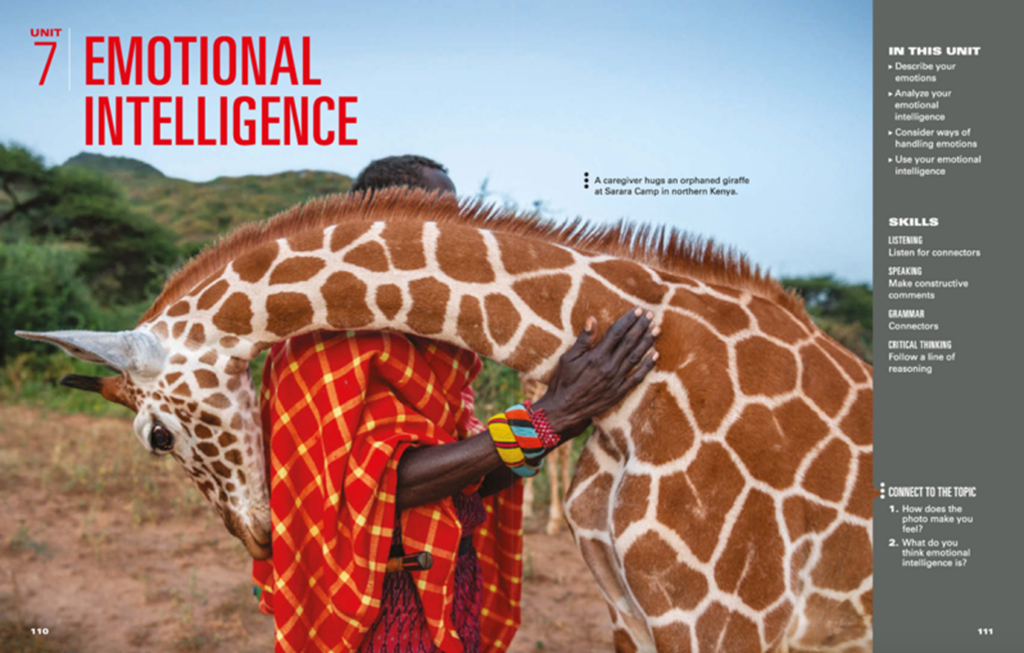

2. Integrate future-ready skills into project-based learning
Projects are a great way to integrate several future-ready skills. This example—on the topic of sustainability—is from NGL’s series 21st Century Communication 2e. It shows how in a project-based lesson, students can be engaged in collaborating, evaluating ideas critically, thinking creatively, and communicating their ideas effectively.
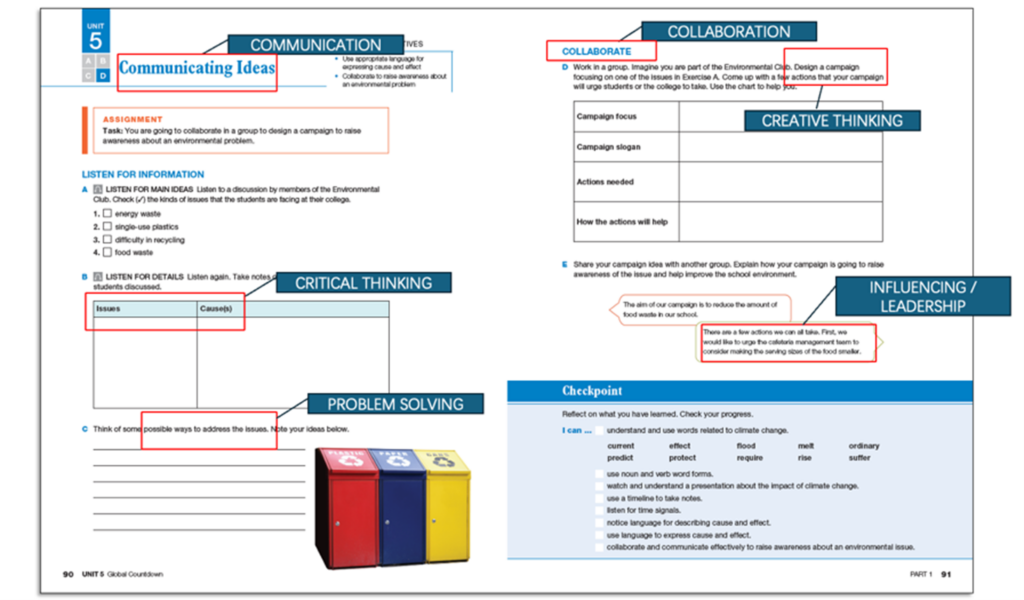
3. Teach strategies for developing future-ready skills
In our teaching content, we can include practical strategies for future-readiness. For example, what are some tips for effective negotiation? How can we show empathy? What are some useful tools for setting goals?
TED Talks are a great source of ideas for future-ready skills and strategies. In each level of Keynote Second Edition, we include four new Career Skills lessons, which incorporate ideas from TED speakers. Each lesson takes an in-depth look at a specific future-ready skill in a context relevant to the modern workplace. Below is an example on decision-making.
To explore a future-ready skill like this in detail, one way is to follow a 3-step approach:
- First, have students watch and reflect on a video or short talk that explains what the future-ready skill is and why it’s important, and provides tips and strategies for how to apply it.
2. Then, have students watch or listen to a workplace relevant conversation that relates to that skill. In the example below, students listen to and evaluate how a group of coworkers are deciding on a candidate to hire.

3. Finally, give students a realistic scenario or role-play where they can apply the ideas, strategies, and language in a groupwork task. In this example, students use decision-making strategies to decide on a new office space.
The future of future-ready skills?
Since we began our partnership with National Geographic Society more than 15 years ago, our goal at National Geographic Learning has been to bring the world to the classroom, and the classroom to life—and that remains core to our mission.
As the global workplace evolves, however, the demand for future-ready skills such as creativity, negotiation, collaboration, and resilience is growing. In addition to helping learners develop English language skills and global competencies, there is an increasing need to integrate future-ready skills as part of our curricula. That way, we can help learners prepare for the opportunities and challenges they may face tomorrow—whatever their future may bring.
Looking for more teaching tips and resources to help you bring the world to your classroom and prepare your English language learners for the future?
To find out more:
Creating Pathways between Academic and Employability Skills, NGL In Focus Blog by John Hughes, 2024
TIRF Insights: English for Career Readiness, TIRF Paper by Chia Suan Chong, 2025
The Future of Jobs 2025, World Economic Forum
The Future of Education and Skills 2030, OECD
The Future of Work: Implications for Equity and Growth in Europe, World Bank
Defining the skills citizens will need in the future world of work, McKinsey
The Ten Vital Skills You Will Need for the Future of Work, Forbes
Top 10 in-demand soft skills to grow your career in 2023, LinkedIn


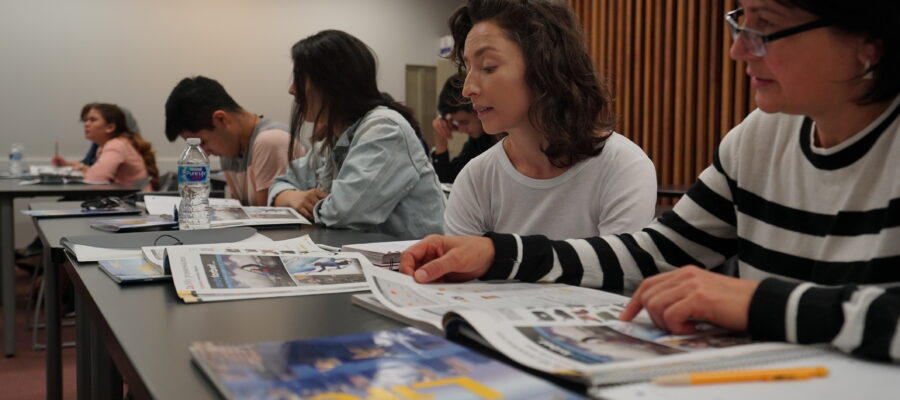
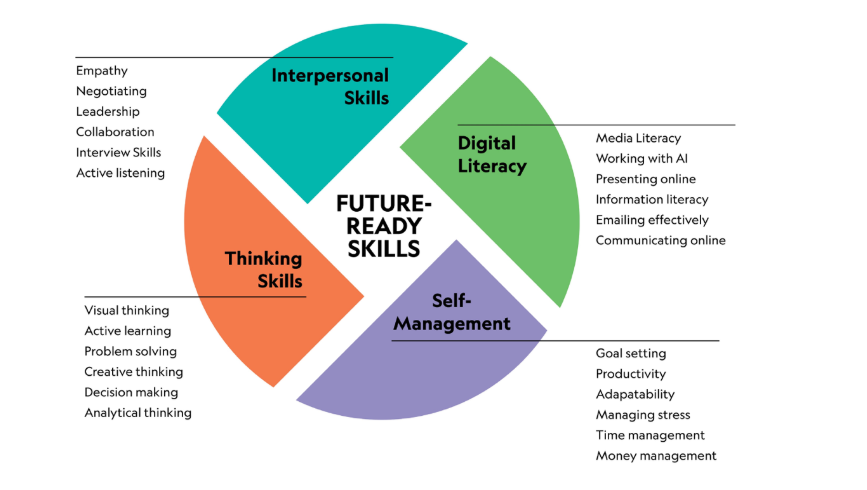
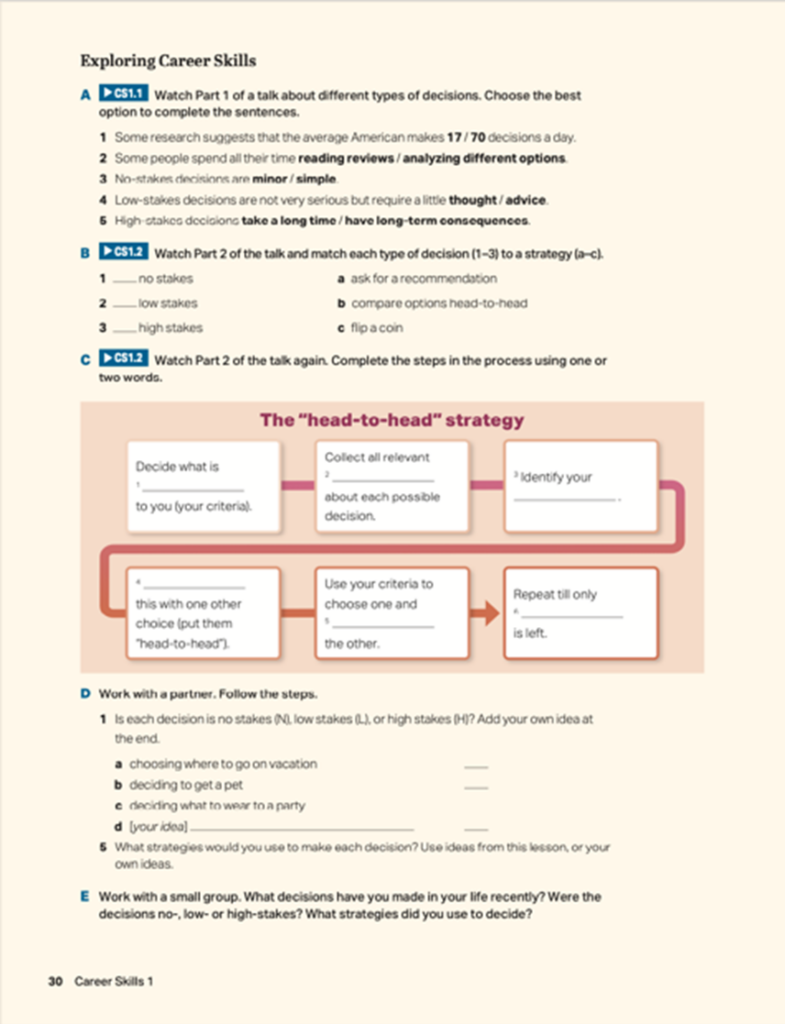
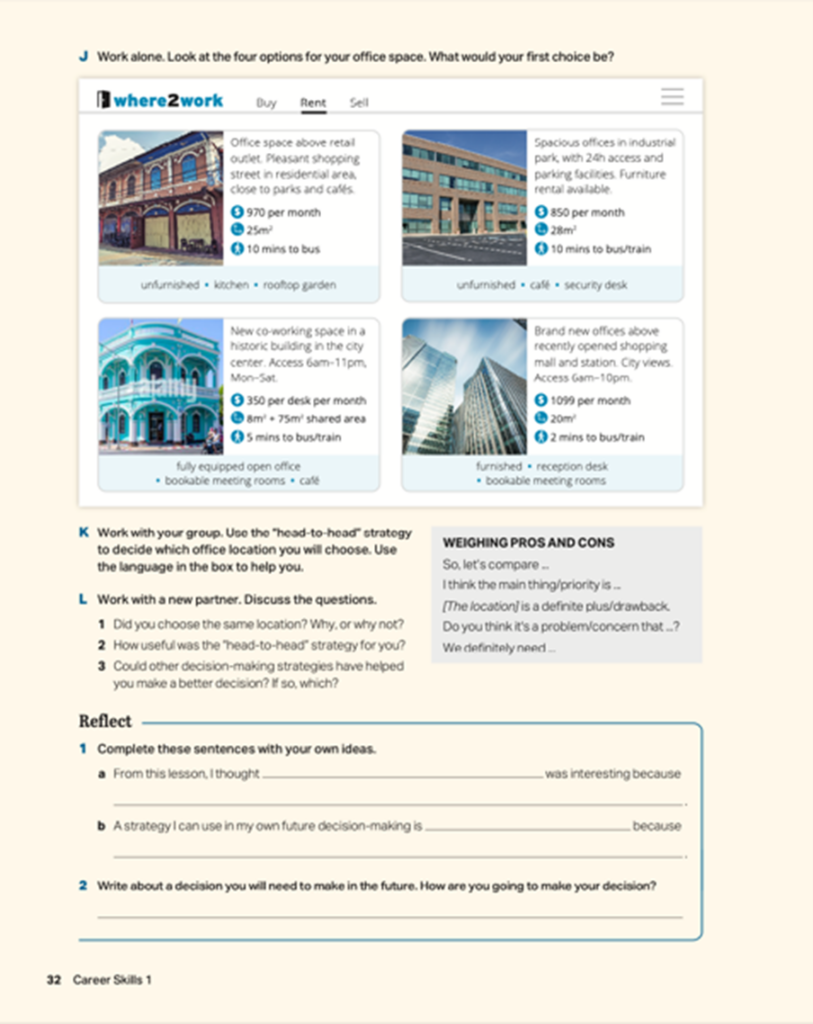
Thank you for this excellent article! Future-ready skills are essential for students’ success.
Thanks very much for your feedback! Yes, really agree that future-ready skills are becoming more important now, especially for students entering the workplace.
Great article…
Congratulations to the autorisation.